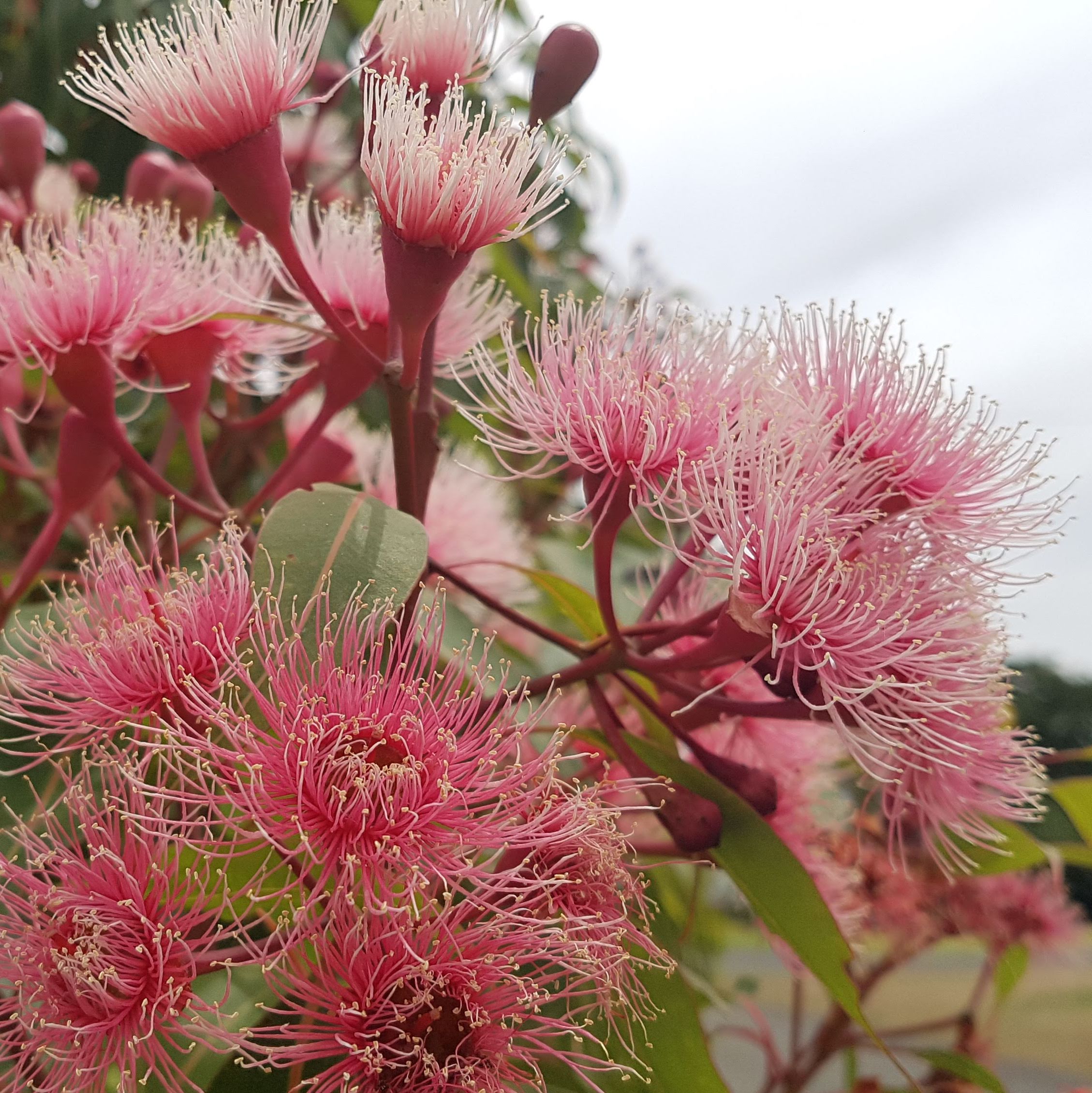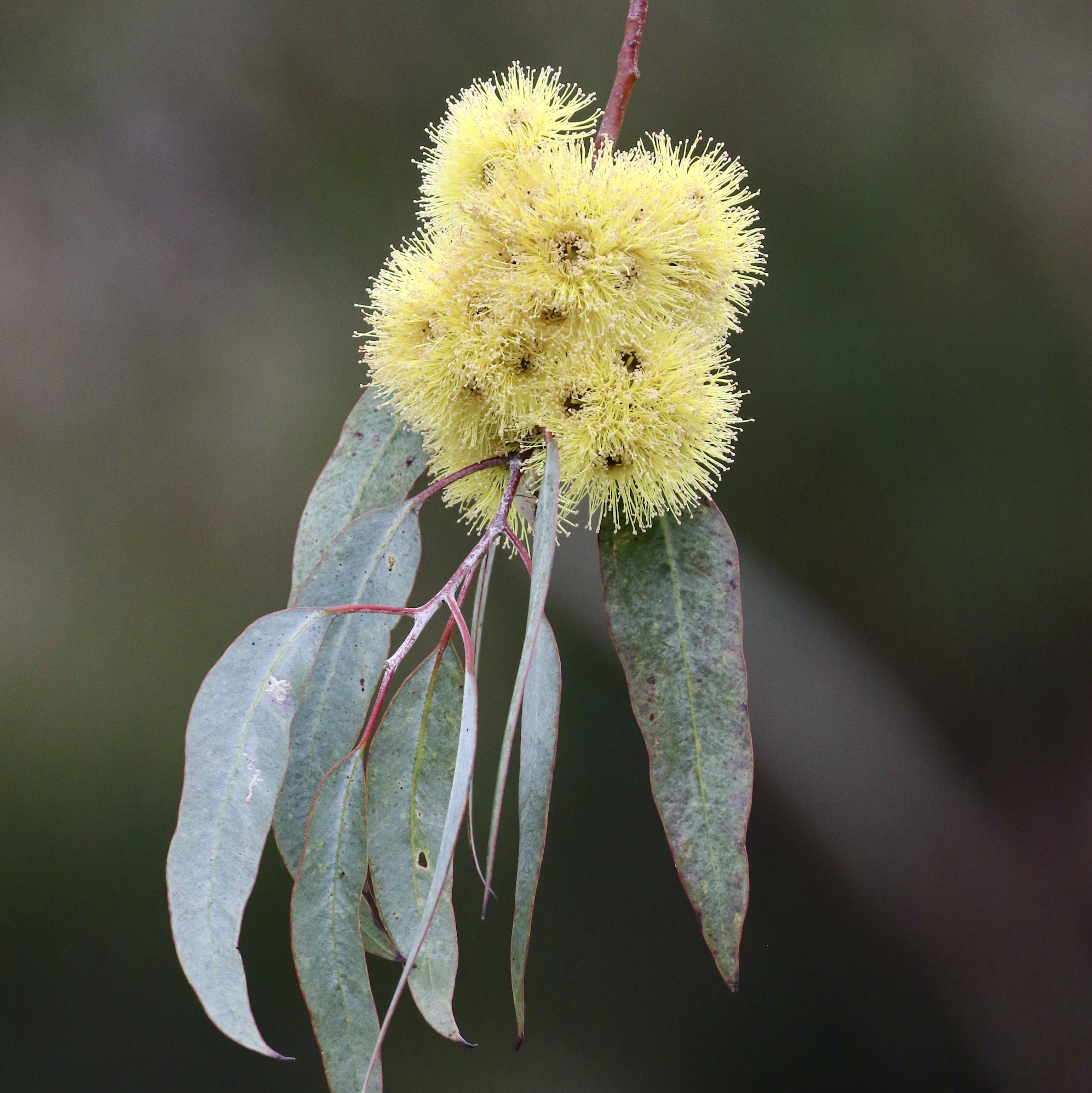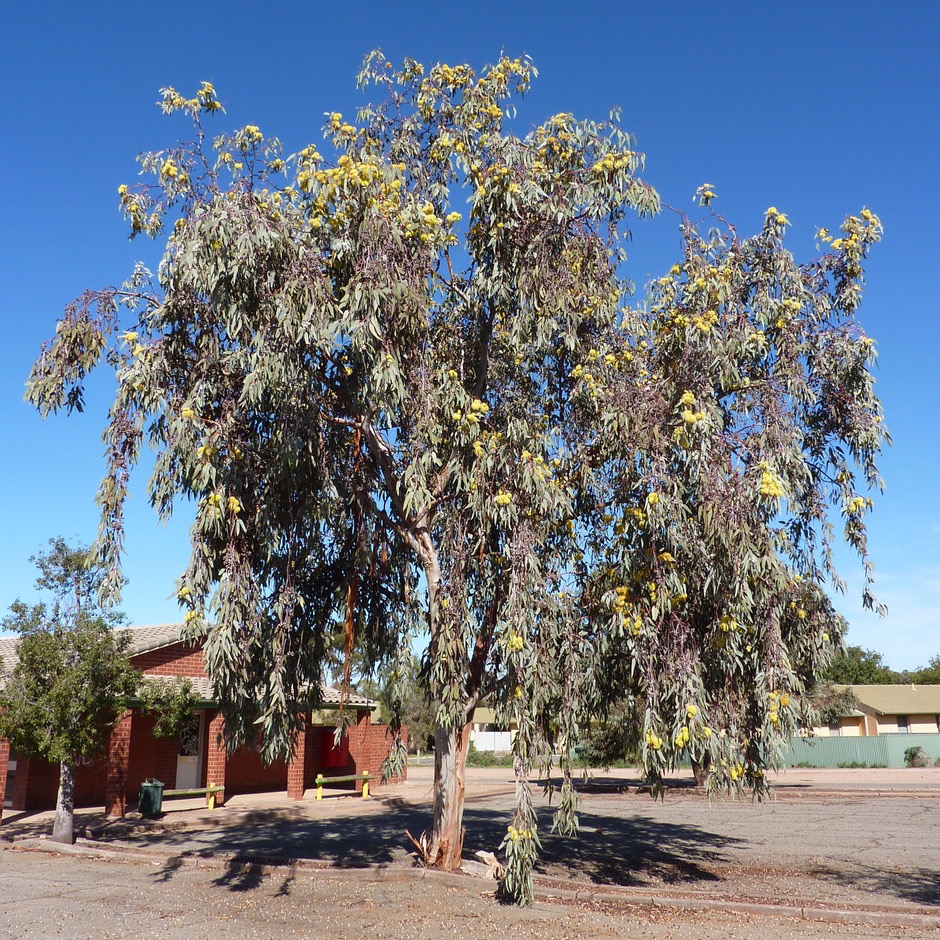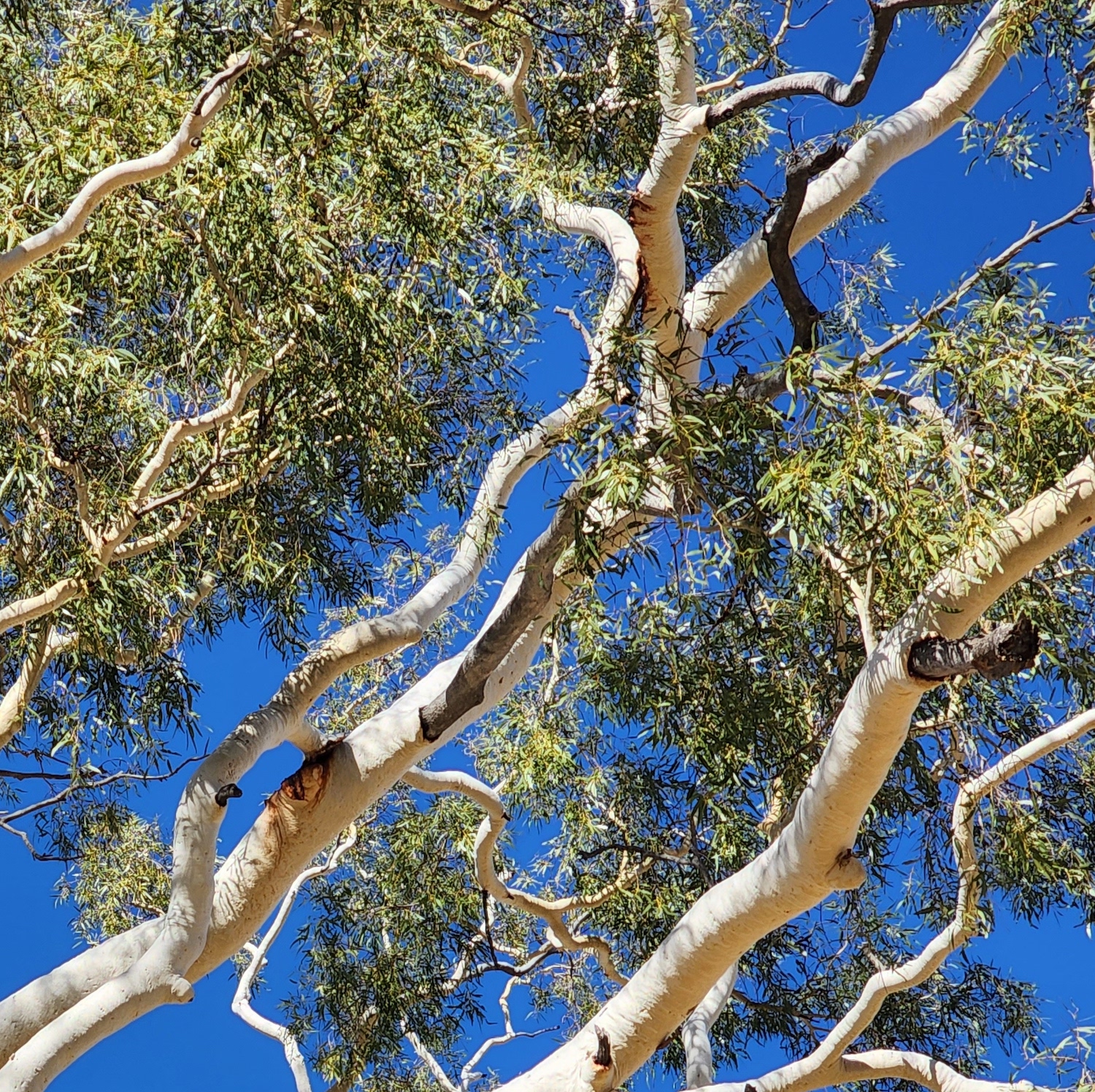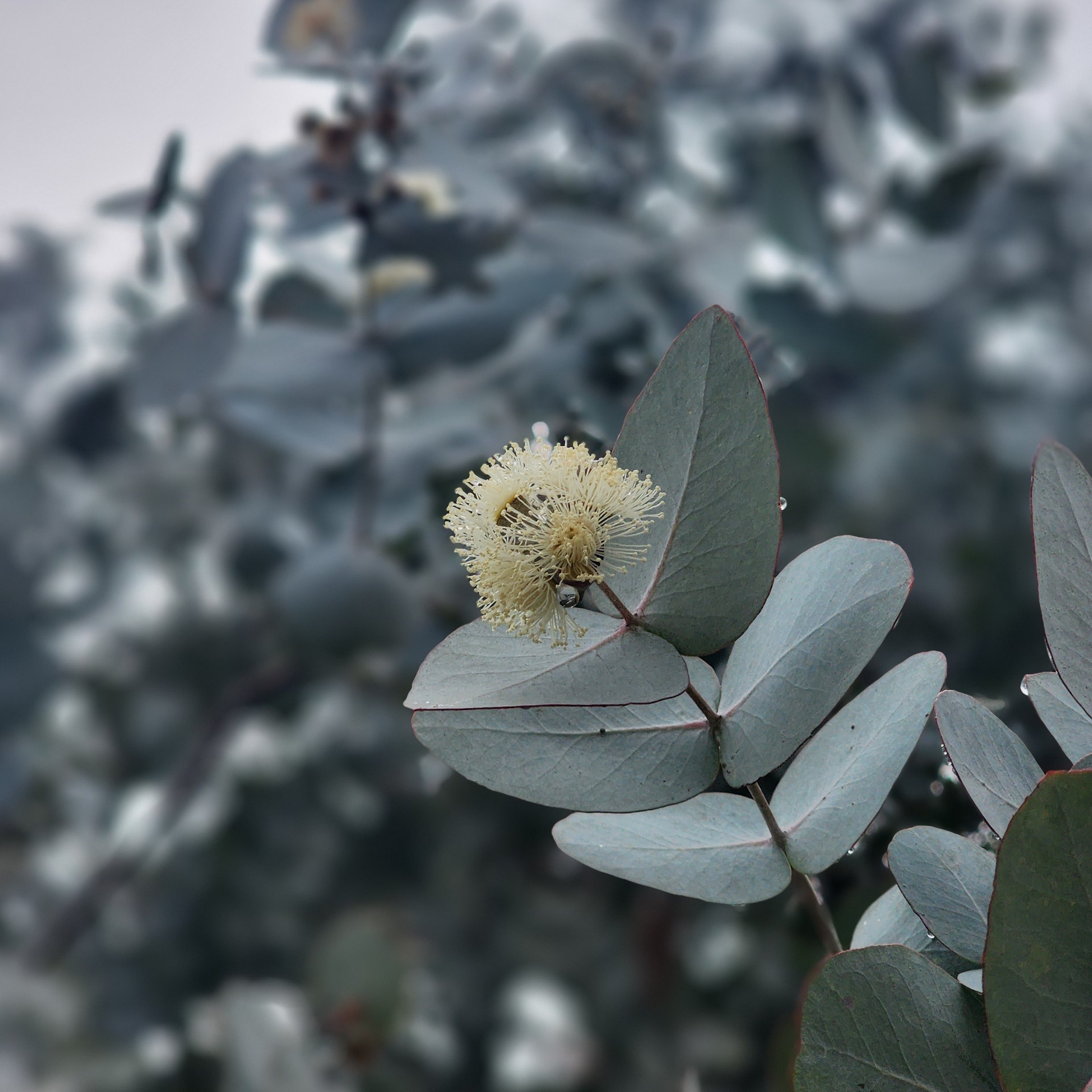2024 Eucalypt of the Year, Corymbia ficifolia, the incredible Red-Flowering Gum
This Western Australian showstopper is one of the most widely planted eucalypts in Australia and around the world! In the wild, however, it is only found in a very small area of subcoastal woodland and heathland in far southwest Western Australia.
It has dark, glossy leaves reminiscent of a fig tree – hence the name fici (ficus or fig-like) folia (leaves). The huge red or orange blossoms cover the ends of branches in an epic show of summer colour, before falling to reveal huge woody gumnuts.
Across southern Australia, the Red-flowering Gum had a particularly spectacular flowering season in summer 23/24, thanks in part to a wet spring and a mild summer. Honeyeaters and bees were as ecstatic as we were at their abundant and joyful flowering.
The Red-flowering Gum is a fantastic choice for streets, parks and gardens, and there are even dwarf varieties that can be grown in pots! Dwarf varieties grow to between 2 and 4 metres (on average) and others can grow up 12 metres although averages don’t always to individuals! It has a dense, shade-giving canopy and dark, non-shedding bark. Hybrid and grafted cultivars exist across a range of pinks, oranges and reds and can be planted in a wider range of climates and soils than the wild Red-flowering Gum.
Congratulations to the passionate #FriendsofFicifolia on social media, who have been campaigning for the Red-flowering Gum right from the first National Eucalypt Day!
This is the first time in seven years that a Corymbia has won. In second place, the Red-flowering Gum was followed closely by another Western Australian endemic, the Silver Princess. Rounding out the medal-winners is the iconic Ghost Gum! This is the first time in seven years that a Corymbia has won.





